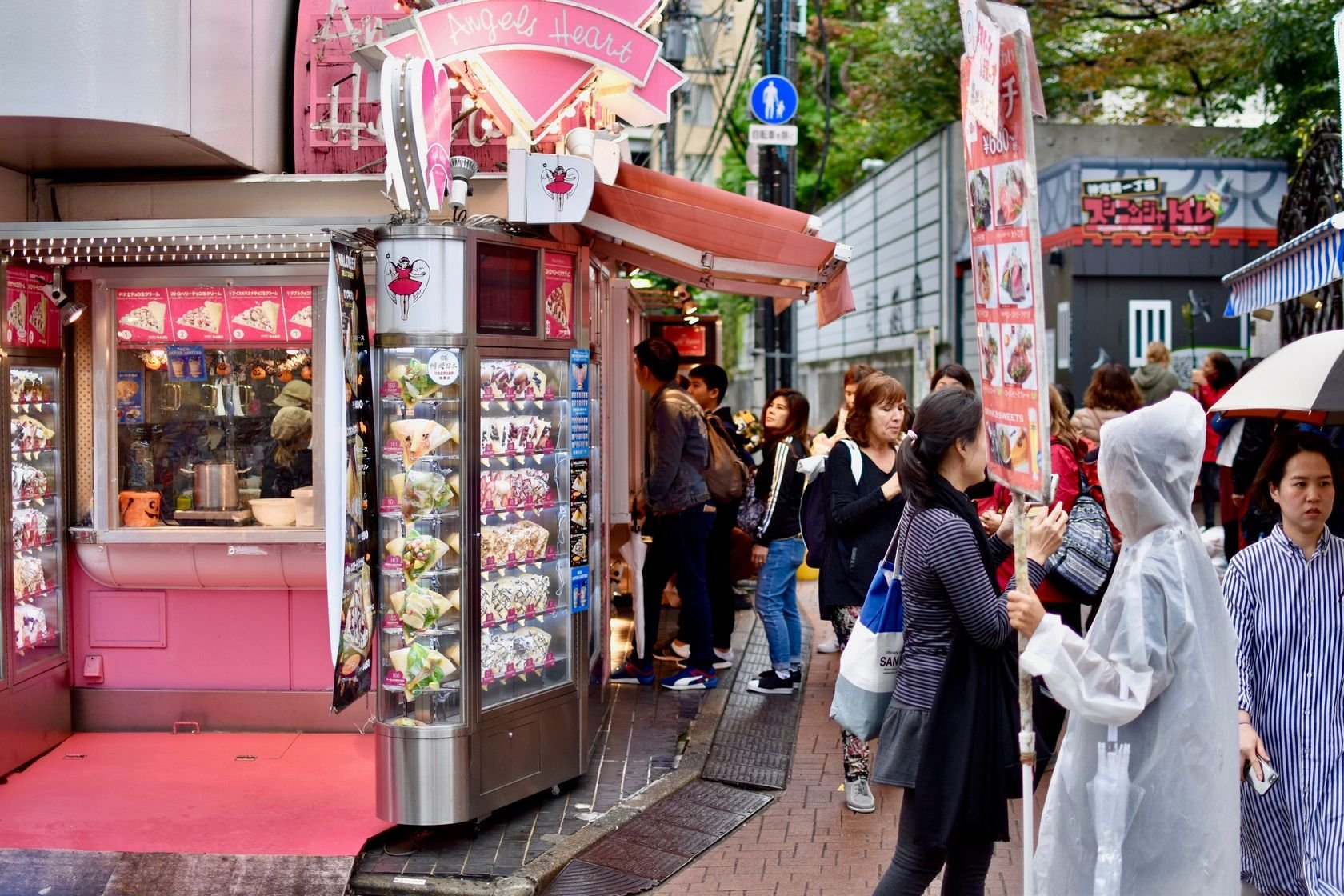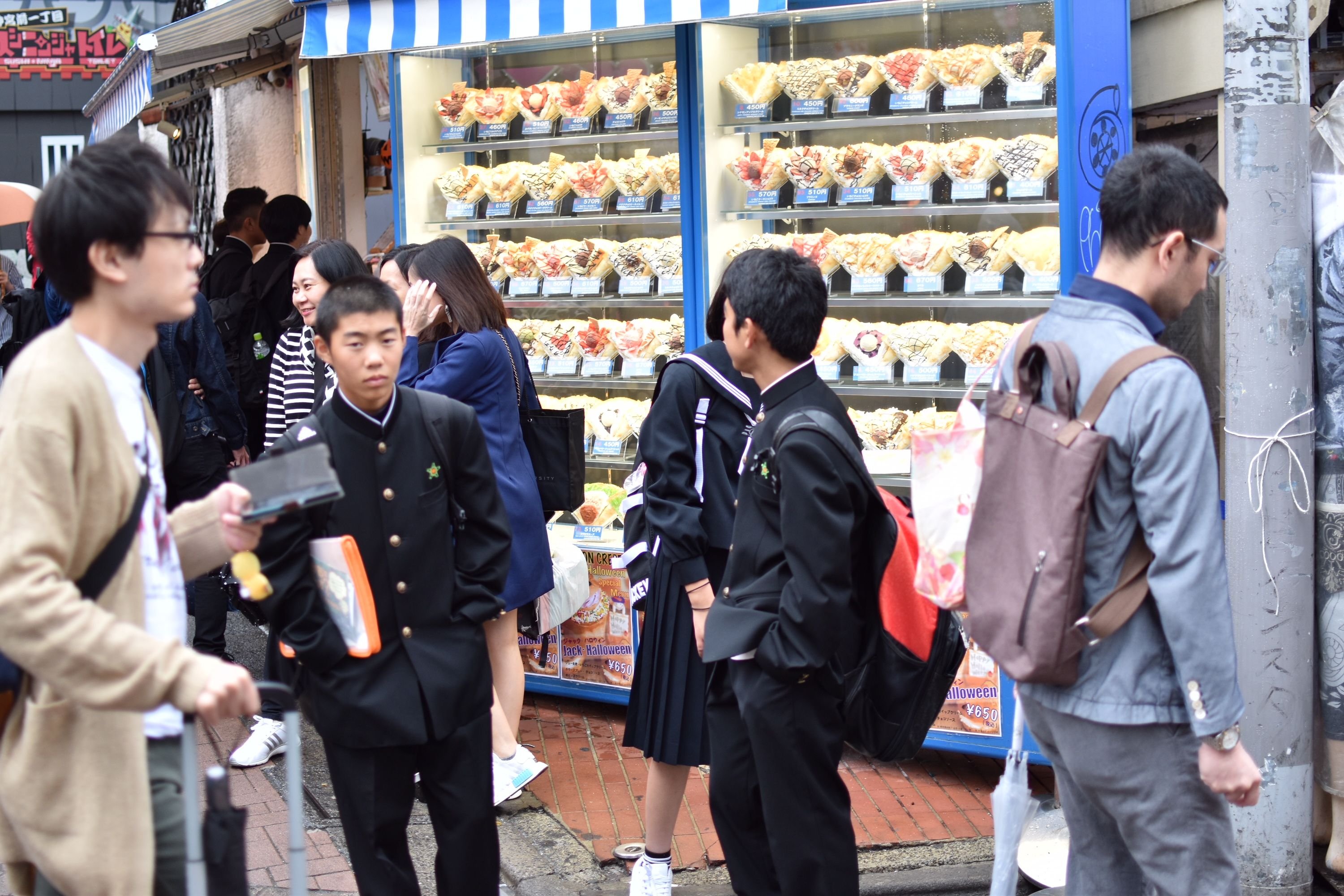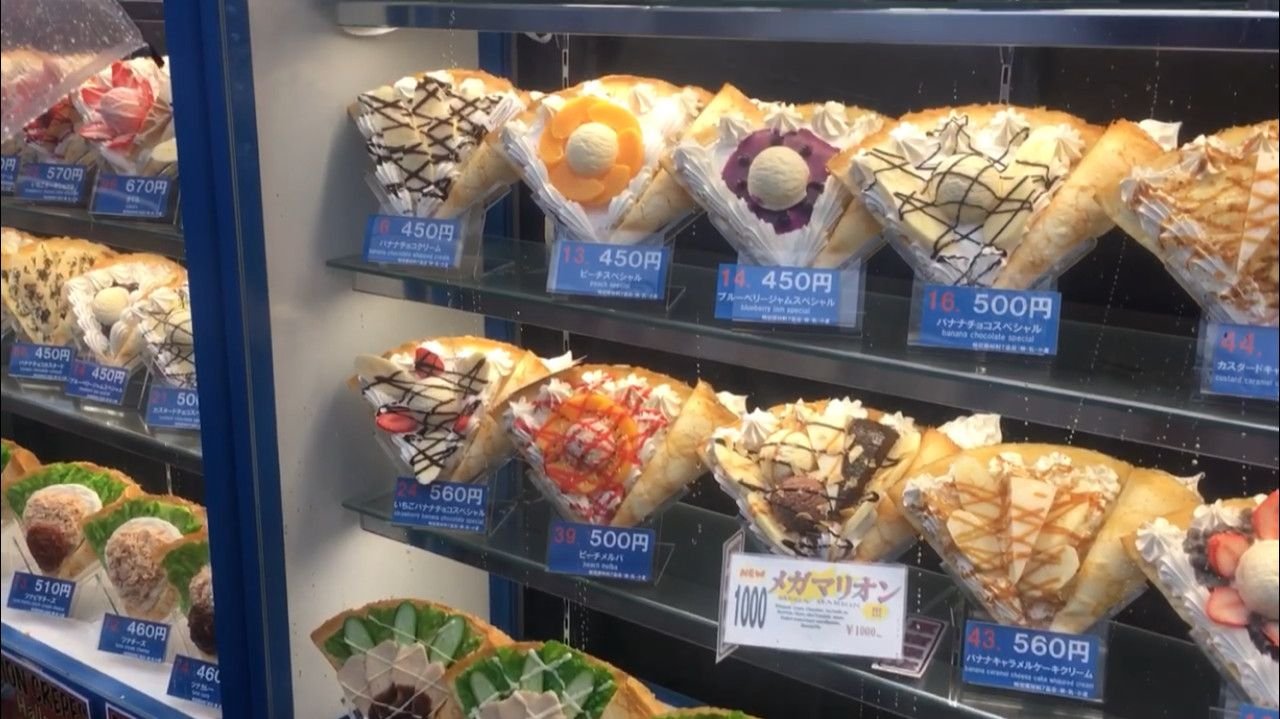This is an authorized translation in English of a post in French by @japon: Takeshita dori : cette petite rue dédiée à la mode (et aux bonnes crêpes)
As my primary language is not English, there are probably some mistakes in my translation.
Remember that the person that speaks here is NOT me, Vincent Celier (@vcelier), but @japon, a French guy.
In the district of Harajuku, not far from Shibuya, is a small pedestrian street that reveals another face of Japanese culture. The Takeshita dori, almost 400 meters long, is teeming with small and often eccentric clothing shops.
When I wandered the streets of Tokyo, especially at peak hours, I was fascinated by the conformity of clothing. Men in dark suits and white shirts, women in gray suits. There seems to be little room for fantasy or individuality. At least it's a very Western vision. When I first became interested in Japanese society and how it worked, I discovered a whole new face. This is the subject of a vast debate, to which I will return shortly.

But back to this little street famous for its eccentricity and quirky looks of young Japanese that we can cross. Because it is a completely different face of fashion that we see. Fantasy, goth or lolita looks, cosplay and Kawaii. Everyone goes for their own originality, the goal is to show!
Fashion designers do not fail to come and spend a few hours observing, analyzing, dissecting these sometimes improbable looks. And all this will inspire some new trends for the next seasons.
If the Japanese youth looking for freedom goes to this street, it is because there are many shops to perfect these looks. This is where they are able to find unique pieces, or the essential accessories. From very rock style to very colorful outfits, the choice is wide.


If tourists know the Takeshita dori for fashion, they discover it for its crepes. You can not miss the two kiosks that face each other and sport the plastic replicas of the recipes. The peculiarity of Japanese crepes is that they are rolled cone-shaped and garnished with ice cream, fruit, biscuits, whipped cream.



Even in the rain, there is always a lot of people, the line seems interminable. Especially that every crepe is made on demand. I wait patiently while thinking about the one I was going to choose. I am very gourmand, if I could have tasted them all, I would have done it.
My turn finally arrives, and I give the number of the crepe I had chosen. It's huge, it's well stocked, I deviate a little from the crowd to chew!

I find a small shrine next door. There is hardly anyone. The contrast is amazing with the shopping street which is only a few meters away. I calmly enjoy my crepe, thinking that this is the last day in Tokyo. The next morning I leave for Kyoto. New adventures await me, I'm excited because it's really the traditional side of Japan that attracts me the most.
However, I did not imagine that Kyoto was going to show me a face very different from what I expected and hoped for.
-- @japon
Travel diary in Japan, by @japon
Tokyo, overcrowded city? Really? by @japon
Are the Japanese too disciplined? by @japon
Going to Japan without speaking Japanese? by @japon
Ueno, more than just a big park in Tokyo, by @japon
Asakusa, diving in the heart of Tokyo's historic district, by @japon
Ameyoko, Ueno's colorful market, by @japon
Tsukiji, the largest fish market in the world, by @japon
Climb the steps of Atago Jinja Shrine in Tokyo, by @japon
Hama Rikyu, an exceptional park in the heart of Tokyo, by @japon
Jimbocho, old books and tempura, by @japon
Shinjuku Gyoen Park and the best burger in the world!, by @japon
One night in Shibuya, by @japon
